Jupiter’s Patterns on My Redwood Chessboard
Cason t -
Hello everyone, and welcome back to this week’s blog post!
Over the past week, I worked on making more chess pieces as well as finishing the board. To start the week, I went to my site placement to work on the pieces. I had already made one rook, but its body wasn’t uniform because I didn’t have a method to make the pieces look similar. My mentor then showed me a way to standardize the bodies: I could roll out the clay and cut out multiple bodies at a time. This method ensures the pieces look mostly the same. Using this approach, I cut out the body of my first rook to reuse the top and bottom. Then I was able to finish making the four rooks needed for the final set.
For the queen, the process was quite similar, except that it is slightly taller and has a different top. For the top, I took a ball of clay, placed it on a flattened ball of clay, and folded it up. I used a smoothing tool to make the top look somewhat like a crown, then added a smaller ball on top to finish it. After completing the first queen, I tried to replicate it, but I couldn’t quite remake the top. Since I had to leave soon, I repurposed the piece into a king. To do this, I added a few layers to the top and placed a cross at the very top.
Later in the week, I revisited the board and began working on the final parts of it: the board itself. Originally, I had planned to use cheaper wood, but my father suggested using more expensive, nicer-looking wood instead. The woods we found were beautiful, but none of them were thick enough to match the height of the board. Then, just as I was about to settle for the cheaper wood, we found some redwood. It was more expensive but looked significantly better. We spent some time searching through the wood pile to find two good 8-foot 2x4s, and eventually, we did. Most pieces were either entirely red or just white, but we found a few that were special—they were light on one side and dark on the other, with the light side featuring some amazing patterns. On the board, each block even resembles Jupiter a bit, which I loved.
Turning the 2x4s into 2×2-inch blocks required ripping the wood so the width would be reduced to 2 inches. On some test runs with different wood, the blocks always turned out slightly too big. The interior of the frame measured about 16 ⅛ inches, which made cutting the blocks a bit tricky. We had to cut the wood to precisely 2.015 inches using a table saw. To achieve this size, we used a digital caliper for exact measurements down to the thousandth. Thankfully, most blocks ended up really close, with some being right on the 2.015-inch mark. However, there were still slight variations in size, and when placed into the frame, these differences caused the frame to come apart slightly. So, I went back to sanding all 64 blocks. This time, I used a disk sander, which made smoothing and slightly reducing the sides of the blocks much easier.
Now, with everything coming together, I’m really happy with how the board looks. All that’s left is to glue the blocks together and add a sealant or finish to the board. I’m excited to see the final result! See you all next week!
One of each completed piece:
Board progression:

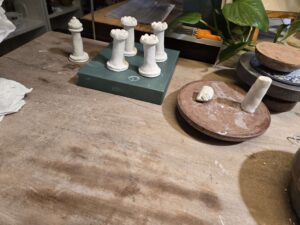
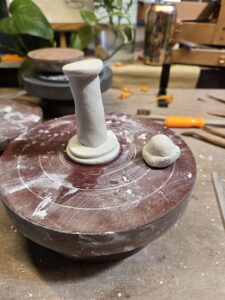

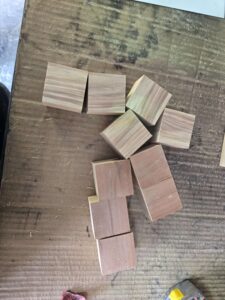


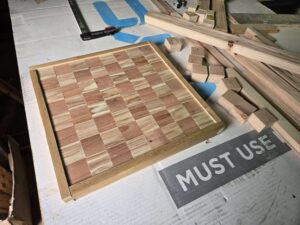

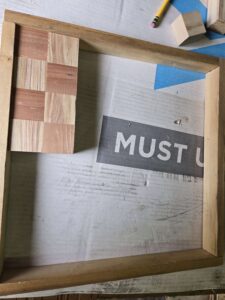

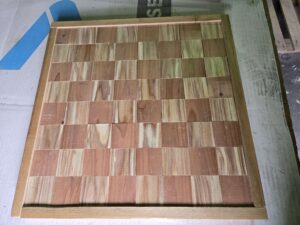
Comments:
All viewpoints are welcome but profane, threatening, disrespectful, or harassing comments will not be tolerated and are subject to moderation up to, and including, full deletion.